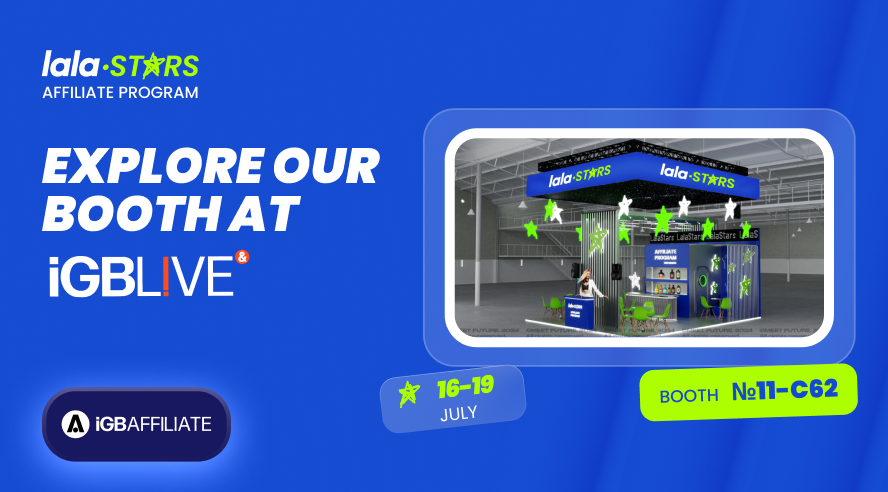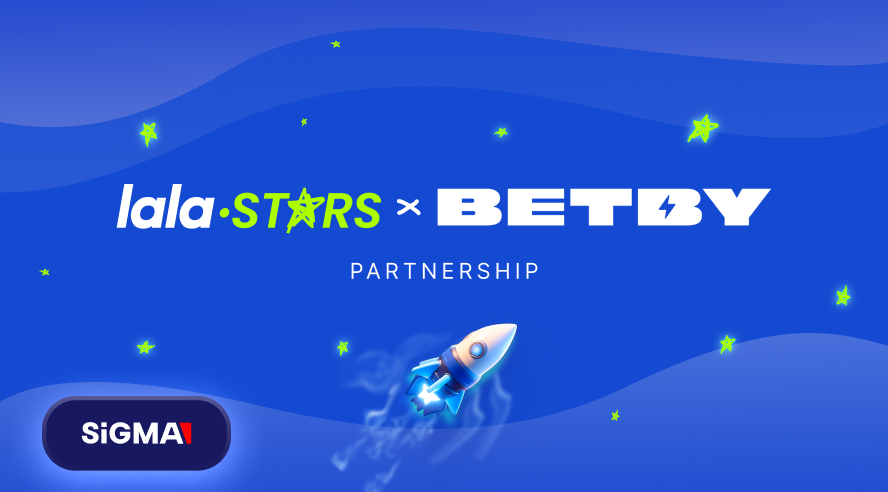Lalastars discuss gamification in online casinos.
The word gamification is heard more and more in the gambling industry, but is it a fashionable trend or a working tool to improve key metrics? LalaStars CEO/partner Mares Shamzhy explains all.
Mares, tell us what you mean by gamification and why the user needs it?
First, let’s answer the question of how the typical online casino user has changed. 10-15 years ago, game content and a set of payment solutions was enough, then the first mechanics designed to improve the user experience (such as internal tournaments and jackpots) started to appear.
The online casino audience is getting younger – current VIP users are people born in the late 80s and early 90s. These people have already grown up with computer games and are more open to new mechanics and game activities. Anyone who can offer them all these will win the race for the active user.
Gamification is the synergy between the classic set of online casinos and the gaming industry, so the more natively you can combine these two experiences, the better results you can achieve.
What types of gamification would you highlight?
There are many. All of our projects use one or more of the following:
- Missions
- Daily Wheels of Fortune
- Achievements
- Gift shop
- In-game currency
- Races (mini-tournaments)
- Level-up rewards (scratchcards, Wheels of Fortune, loot boxes, etc.)
Users are interested in assignments, quests, receiving rewards, exchanging them for real prizes, etc. A little later, I will provide statistics and explain how they affect key metrics.
What is the main goal and value of gamification for a product?
Each activity has a clear goal. Here’s an example: “missions” in game form encourage the user to follow the flow you have thought out in advance (from confirming the phone number for further communication with the user to increasing the game session length and the average deposit and bet).
Then there are “achievements”, which are the mechanics of users obtaining “medals” that do not affect the bonus cost; they are phantoms. They are worth nothing to the casino but motivate the user to continue playing and give them the illusion of progress and success, even if the real winnings are not so significant. Consequently, we get a high level of engagement, keeping the user’s interest for a more extended period.
Summing up, your goal is to keep the user on the site as long as possible and get them back as soon as possible after they leave. Gamification helps a lot with this.
What percentage of users interact with gamification?
Our affiliate programme is focused on Tier-1 markets, so let’s discuss these markets. On average, 43% of users interact with gamification mechanics at least once per game session. Of these, 29% are VIP players, which is an exceptionally significant indicator.
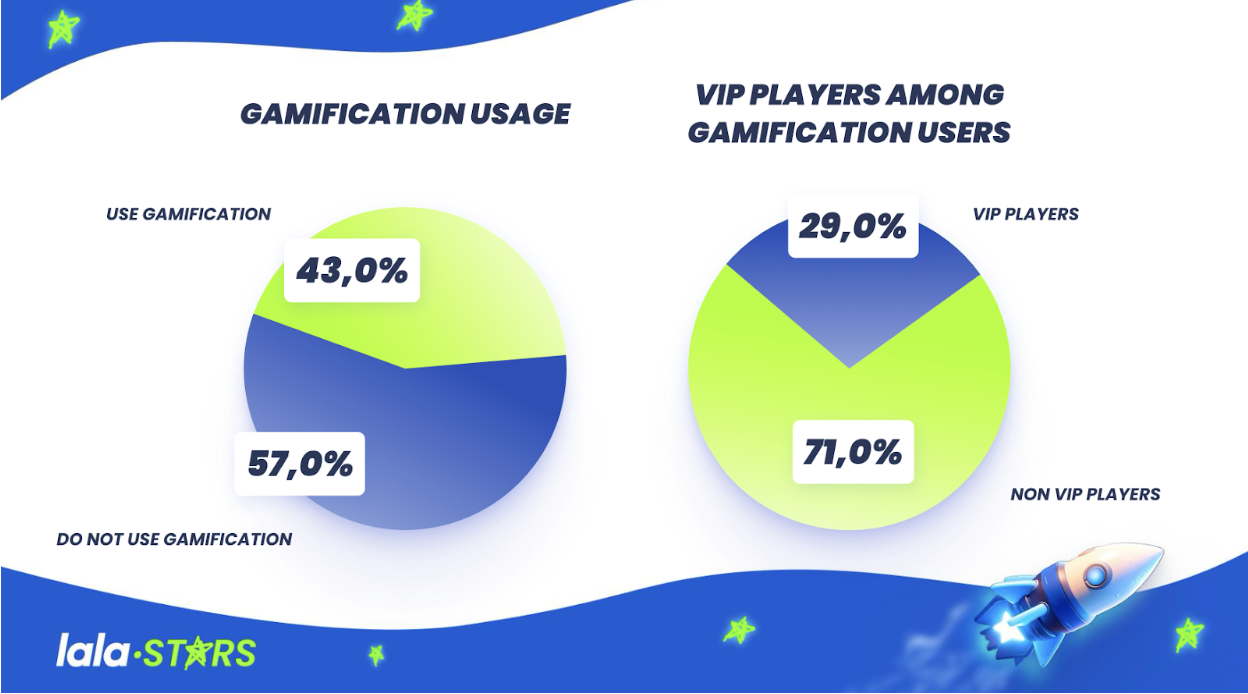
And what is important: the average activity of players who use gamification (the same 43%) come to the project much more often (players who use the functionality come on average 3-3.5 days a week as opposed to two days a week for those who do not use it).
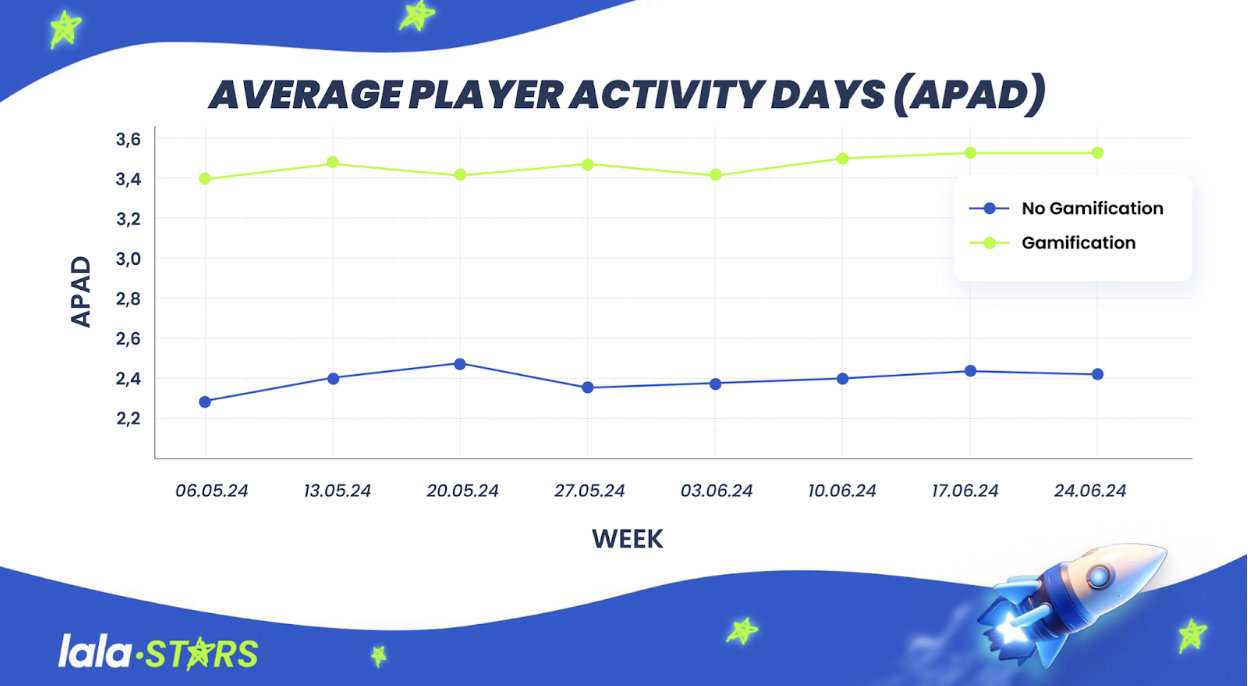
OK, so how does gamification keep the user in the casino?
There is a direct correlation between the frequency of a user’s visit to the site and ARPPU. If you are good with “deposit traps” on the site, then the more often you “make” the player visit the site, the higher the profit per user will be.
As gamification, among other things, we use:
- Wheels of Fortune, which users can spin for free every 12 hours.
- Email and SMS reminders. They have no negative effect on the user (spam), but they have an open rate 8.2 times higher than the average promotional message.
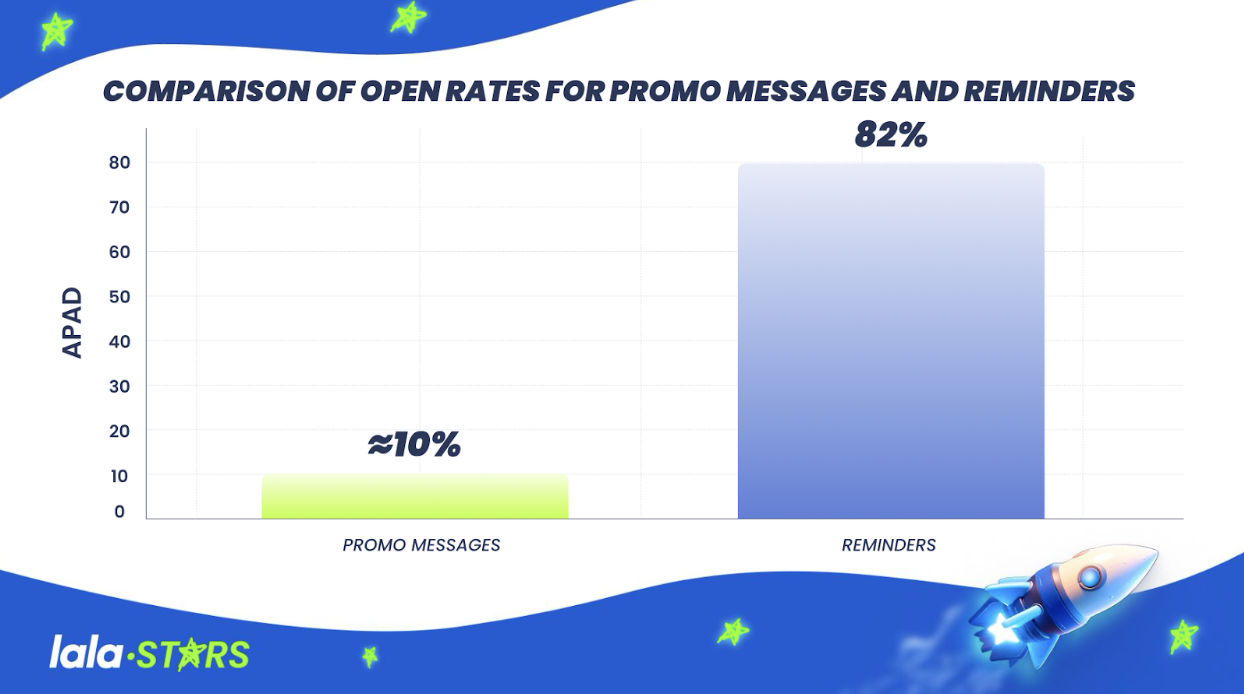
- Rewards (achievements) for daily visits to the site. This is how you stimulate the user to make a series of daily visits to the site (the longer the series, the higher the rewards). The rewards can be internal currency, achievements (medals), or an improved deposit bonus.
By the way, there is another good example: the audience, which is usually neglected by competitors as much as possible, limiting themselves only to promotional mailings and emails – no FTD users. In all projects of the LalaStars affiliate programme, we focus on involving them in the game.
For example, internal currency tournaments offer the possibility of winning a real prize at the end of the week. The costs for such a tournament are €500-€1000 per week, but they allow you to natively accustom the player to the product, develop trust, and deposit.
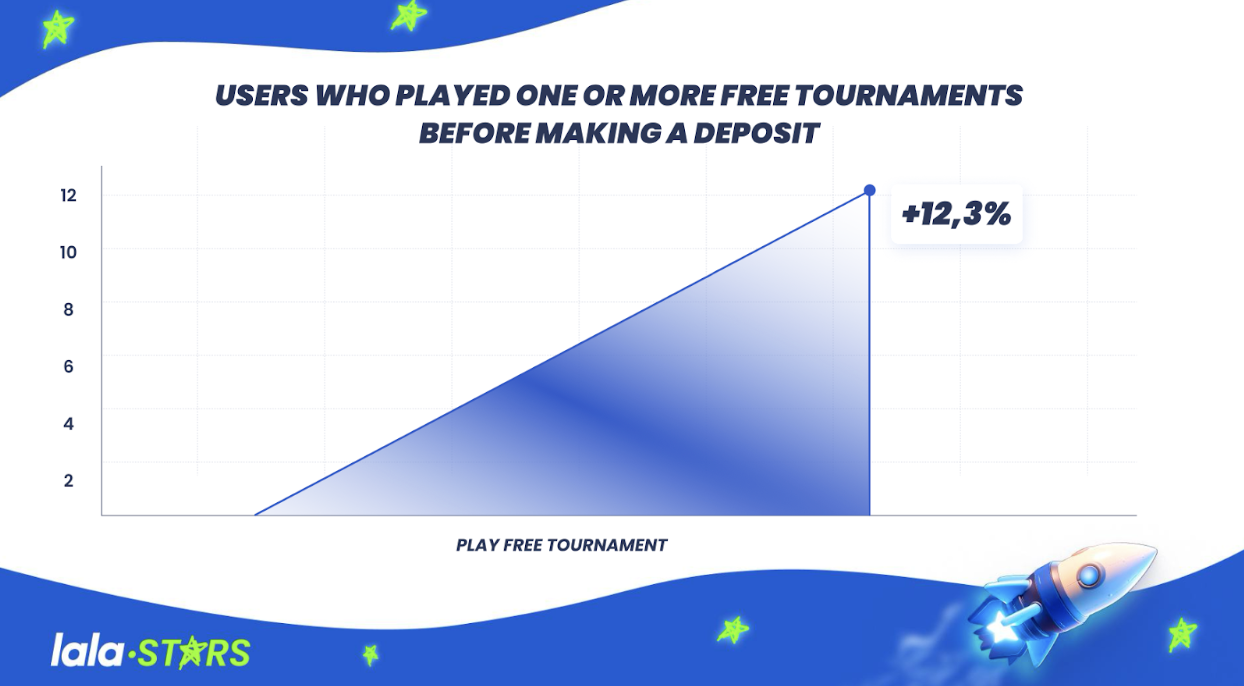
To summarize briefly, how has the implementation of gamification affected key brand metrics?
In fact, LTV, MAU, retention rate, and average deposit have objectively increased.
I don’t want to throw around pretty phrases and say that “the best score is the high score of our affiliate partners”, but in this case, it’s really true. Our brands wouldn’t be ranked at the top or win the Casino of the Year award if they weren’t converting well. We are constantly working to ensure that both click to deposit, average deposit, and other indicators remain among the best in the market.
LalaStars affiliate programme is a direct advertiser and will be exhibiting at iGB L!VE from 16-19 July at RAI Amsterdam. Find us at booth #11-C62.

It is important to know that the author does not sell any gamification solutions but is an affiliate program with a pool of brands on which various features are implemented to improve the player’s user experience.

 Use this button to Sign In partner account for all brands (except Jungliwin).
Use this button to Sign In partner account for all brands (except Jungliwin).


